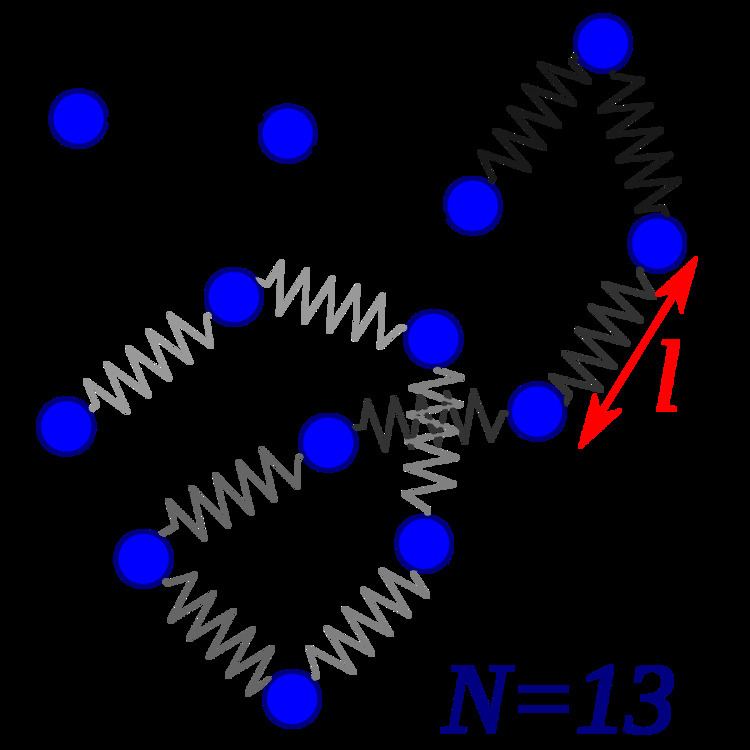 | ||
The Rouse model is frequently used in polymer physics.
The Rouse model describes the conformational dynamics of an ideal chain. In this model, the single chain diffusion is represented by Brownian motion of beads connected by harmonic springs. There are no excluded volume interactions between the beads and each bead is subjected to a random thermal force and a drag force as in Langevin dynamics. This model was proposed by Prince E. Rouse in 1953.
An important extension to include hydrodynamic interactions mediated by the solvent between different parts of the chain was worked out by Bruno Zimm in 1956. Whilst the Rouse model overestimates the decrease of the diffusion coefficient D with the number of beads N as 1/N, the Zimm model predicts D~1/Nν which is consistent with the experimental data for dilute polymer solutions (where
In a polymer melt, the Rouse model correctly predicts long-time diffusion only for chains shorter than the entanglement length. For long chains with noticeable entanglement, the Rouse model holds only up to a crossover time τe. For longer times the chain can only move within a tube formed by the surrounding chains. This slow motion is usually approximated by the reptation model.
Spring bead based network model:
In spring-bead based network model, the springs and beads are used as components in the crosslinked network. Springs are cross-linked to represent mechanical behavior of the material and bridge molecular dynamics (MD) model and finite element (FE) model. The beads represent material mass of cluster bonds. Each spring is used to represent a cluster of polymer chains, instead of part of a single polymer chain. This simplification allows to bridge different models at multiple length scales and improves the simulation efficiency significantly. At each iteration step in the simulation, forces in the springs are applied to the nodes at the center of the beads, and the equilibrated nodal displacements throughout the system are calculated. Different from the traditional FE method for obtaining stress and strain, the spring–bead model provides the displacements of the nodes and forces in the springs. The equivalent strain and strain energy of spring–bead based network model can be defined and calculated using the displacements of nodes and the spring characteristics. Furthermore, the results from the network model can be scaled up to obtain the structural response at the macroscale using FE analysis.
